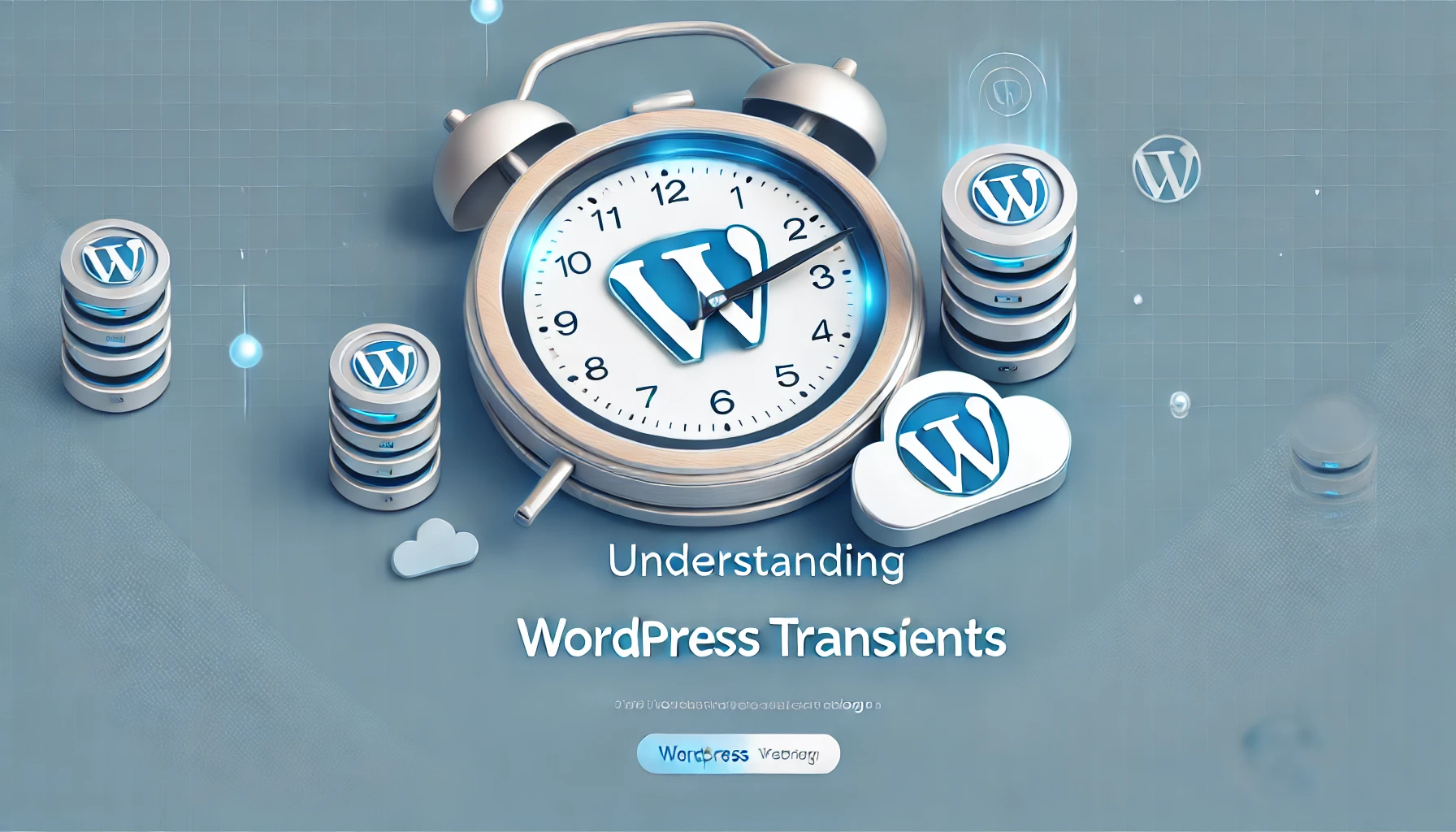Physical Address
304 North Cardinal St.
Dorchester Center, MA 02124
Physical Address
304 North Cardinal St.
Dorchester Center, MA 02124

As a WordPress developer, I’ve come to appreciate the small performance tweaks that make a significant impact. Among these hidden gems is the humble transient, a built-in caching mechanism that’s often misunderstood or simply overlooked. While you might be familiar with options or wp_cache, transients deserve their own spotlight because they’re perfect for speeding up dynamic operations without the complexity of a full-blown caching system.
In a nutshell, a transient is a way to store temporary data in the WordPress database, with an optional expiration time. They serve as a straightforward solution for caching API calls, database queries, or any expensive processes that you don’t want to repeat on every page load.
Think of transients as short-term memory for your WordPress site. If you make a remote API request, say to fetch the latest tweets or to retrieve data from a third-party service, that request takes time. Calling it on every page load is inefficient, right? With a transient, you can store the response the first time you fetch it. Then, on subsequent requests, WordPress just pulls it from the database (or object cache if available), delivering it to visitors faster.
The beauty is that each transient comes with an expiration time. After it expires, WordPress removes it automatically, forcing a refresh. If the underlying object cache (like Memcached or Redis) is available, transients can skip the database altogether and work entirely in memory for even better performance.
Back when I first discovered transients, I was skeptical: “A simple caching API built into WordPress?” But once I started using them to offload repetitive data fetching, I realized how elegant and powerful they are. They’re a built-in way to give your site a performance boost without adding complicated caching layers.
You don’t need a dedicated plugin or a special library; transients are baked right into WordPress core. The three core functions you need to remember are:
Let’s say I’m pulling data from a slow external API. Instead of doing it every time the page loads, I’ll fetch it once, store the result in a transient, and then reuse it until it expires.
function my_get_expensive_data() {
// Define a unique transient name
$transient_name = 'my_expensive_data';
// Try to get the transient
$data = get_transient( $transient_name );
if ( false === $data ) {
// Transient not found or expired, so fetch fresh data
$response = wp_remote_get( 'https://api.example.com/slow-endpoint' );
if ( is_wp_error( $response ) ) {
// Handle error gracefully
return 'Oops, something went wrong.';
}
$data = wp_remote_retrieve_body( $response );
// Store the data for 12 hours
set_transient( $transient_name, $data, 12 * HOUR_IN_SECONDS );
}
return $data;
}In this code snippet, I first try to retrieve the transient. If it returns false, it means there’s no cached data or the transient expired. In that case, I make the API call, get the new data, and store it with set_transient(). On subsequent requests within the next 12 hours, get_transient() will return the cached data instantly.
This approach drastically reduces external requests, speeds up page loads, and is transparent to the user.
Use transients when:
Avoid transients when:
From personal experience, I find that transients fit beautifully when I’m working with third-party integrations. Let’s say I’m building a custom plugin that pulls product listings from an external API—something that doesn’t change every second. I can cache results for a few minutes or hours. If the API is occasionally slow or rate-limited, my users won’t notice because the site mostly serves cached content, and I hit the API only when needed.
If you ever find yourself unsure whether the cached data is getting old, you can manually delete the transient or set shorter expiration times until you’re confident in the balance between freshness and performance.
I remember a project where I integrated WordPress with a third-party shipping provider’s API. The API call returned a detailed list of shipping options and prices. Initially, the page took a noticeable time to load because it queried the provider on every page request. After implementing transients with a 6-hour expiration, the page became lightning-fast. The client was thrilled, and it required minimal effort on my part—just a handful of lines of code and some thoughtful logic.
Transients have since become a go-to solution in my toolbox. They’re not a cure-all, but for the right kind of data, they can smooth out performance hiccups and keep your users (and clients) happy.
Transients may sound like a small feature, but in my experience, they’re a powerful tool to keep your WordPress site lean and responsive. By caching time-limited, expensive data with just a few lines of code, you can improve load times and reduce unnecessary calls to external services or heavy internal processes.
If you’ve never tried transients before, I encourage you to experiment. Start small—maybe cache a query for a few minutes and see if your page loads faster. Over time, you’ll discover countless scenarios where transients can save you time, bandwidth, and headaches. They’re an understated part of the WordPress ecosystem, but once you’ve tasted their benefits, it’s hard to imagine life without them.